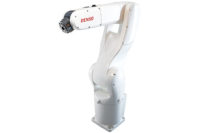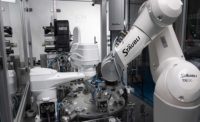Based in Shoreview, MN, Summit Engineered Automation has been designing and building custom assembly systems since 1998. The company has built systems for manufacturers of medical devices, plastics, electronics, cutting tools and consumer products.
Following customer research in 2014, Summit formally adopted a process that it calls the “Summit Agile Process.” Research showed that traditional relationships between custom automation suppliers and customers were built on divergent goals. As Summit talked to companies about projects that did not perform as expected, the company learned that communication, collaboration, project cost management and late deliveries were all common problems.
In response, the company developed what it calls the Summit Agile Process to create true partnerships with customers by focusing on risk analysis early and throughout a project.
“Our principles emphasize automation risk management and debugging through proof of concepts earlier on—eliminating projects doomed to fail and leading to reduced total automation costs,” says Todd Bauernfeind, president of Summit Engineered Automation. “We partner with our customer’s team from beginning to end using these agile methods that focus on iterative early design, collaboration, and transparent project management communications. Altogether, this ensures that objectives and final product are aligned, relieving stresses normally associated with projects. We believe this manages risk better than traditional linear project management.”
During a machine building project, Summit helps customers navigate four challenging risk areas: technology, engineering, communication and planning. Technology risks can happen with new equipment or products under development. To eliminate this risk, Summit ensures that customer teams are trained on new technologies. Engineering risks happen with new system architectures, incomplete engineering requirements, leadership shortcomings, or failing to follow industry standards. Communication risks are avoided by holding regular reviews with all stake-holders and providing monthly reports to customers. Planning risks happen when a project manager has little to no experience planning automation projects. At Summit, project teams are led by qualified, experienced professionals.
The Summit Agile Process was put to the test recently when the systems integrator was approached by start-up Corvida Medical of Coralville, IA, to build equipment to produce its latest product, the Halo, a closed-system transfer device designed to protect healthcare professionals from exposure to hazardous drugs while they are compounding and administering chemotherapy.
Initially, Corvida approached Summit to quote two machines: one to produce a needle ratchet assembly and another for final assembly. Summit worked with Corvida to create a user requirement specification for both pieces of equipment and submitted a proposal for each.
Summit was awarded the business and began the engineering phase. Before long, it became increasingly clear that it made sense to combine the two machines into one. This would save on controls cost—money that could be spent on better technology or process improvement. It would also eliminate labor.
Ultimately, Summit built a system in which three Epson six-axis robots are integrated with a pair of servo-driven rotary indexing tables to assemble, weld, inspect and unload the product.
An operator independently loads both dial tables from the front of the machine. The assembly process begins on the left-hand table. At the first station, the parts are given a plasma treatment to promote adhesion. Next, an Epson C4 robot picks a needle from a drum feeder and inserts it into a ratchet. The table then indexes the parts to stations where a UV-cure adhesive is dispensed and cured. A Keyence CVX vision system inspects the quality of the adhesive bonds.
Next, a center robot removes the part from the left table and assembles it into the parts on the right-hand table. The parts are then indexed forward for assembly by a servo-driven ultrasonic welder from Herrmann Ultrasonics. The finished assembly then undergoes force and pressure testing through an Ethernet/IP equipped leak tester from Z-axis. The third robot unloads the assemblies, separating good products from bad ones based on upstream test results.
Using six-axis robots for material handling enabled Summit engineers to place a multitude of process steps into a compact and efficient footprint. The flexibility granted through robotic part handling and servo-driven rotary tables also allows the machine to run verified good and not-good assemblies in reverse to verify the test results.
To see a video of the assembly system, click here. For more information on automated assembly systems, visit www.summitengineeredautomation.com.
Learn about new products for medical device assembly
Enhancing Medical Manufacturing Accuracy, Precision, and Repeatability
Zimmer Group – strong partner in the medical and pharmaceutical industry
Precision Indexing Machines for Medical Manufacturing
Provide safe, high quality care with ACE








